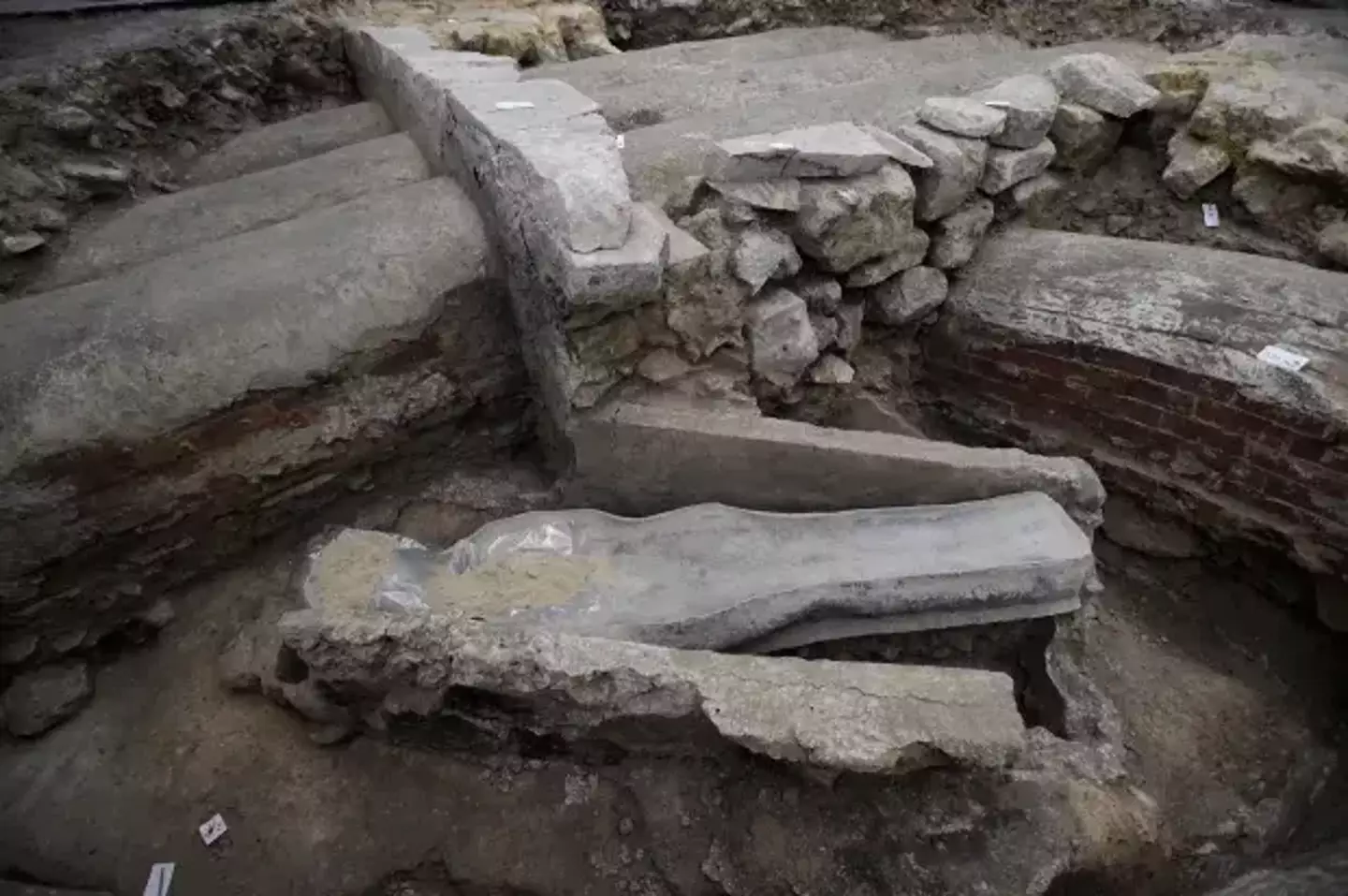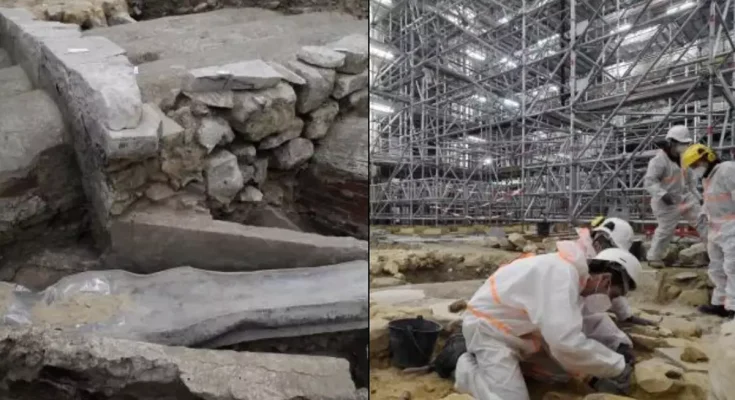Another mystery is history…
Reconstruction work on Notre Dame, following the fire that seriously damaged the iconic cathedral, uncovered some parts of the structure that would have otherwise been left alone.
In 2022 two lead-lined coffins were found to have been buried beneath the nave of Notre Dame and experts set about identifying who the two occupants were.
Thanks to a brass plaque on one of the coffins, one of the bodies was soon identified as belonging to Antoine de la Porte, the canon of Notre Dame who died on Christmas Eve 1710 at the ripe old age of 83.
All things considered he had ‘le good innings’, as the French would say if they’d ever shown a little more care for cricket and much less for their own language.
Experts noted that his skeleton indicated he’d lived a largely sedentary life and had very good teeth, the mystery skeleton in the next coffin over was quite the opposite.

When restoring Notre Dame two lead coffins were found buried beneath the cathedral’s nave. (AFP)
While de la Porte had died old and with good teeth after a sedentary life, the other body had died young with terrible teeth and appeared to have a penchant for horse-riding.
That body was nicknamed ‘the cavalier’ as his pelvic bone suggested he was an experienced rider.
He seemed to have died in his 30s and suffered from a ‘chronic disease’ that destroyed most of his teeth by the time he was dead, reported The Guardian.
Apparently the end of this chap’s life was not a pleasant or easy one, but now we know who he is.
According to the BBC, the mystery of the skeleton’s identity has been solved as he’s the French poet Joachim du Bellay, who died in his late 30s on 1 January, 1560.
During his life, he had spent some time working at Notre Dame and was recorded as having been buried there, but his tomb had never been found.

Joachim du Bellay, the poor chap suffered from bone tuberculosis and meningitis, and his skeleton’s teeth were in terrible condition. (Public Domain)
His body showed traces of bone tuberculosis in the neck and head as well as chronic meningitis, conditions mentioned in some of the poet’s work.
He and also had a deformation of the skull which would have been caused by wearing a headband as a baby.
The adeptness at riding a horse would make sense as well as he did ride from Paris to Rome and spent a few years living there where he got the hots for a local lady called Faustine.
It’s suspected that his tomb was moved at some point after he was buried as there had been previous efforts to locate the poet’s final resting place, which failed because he wasn’t where records indicated he was buried.
Notre Dame is scheduled to reopen on 8 December.
Featured Image Credit: AFP



